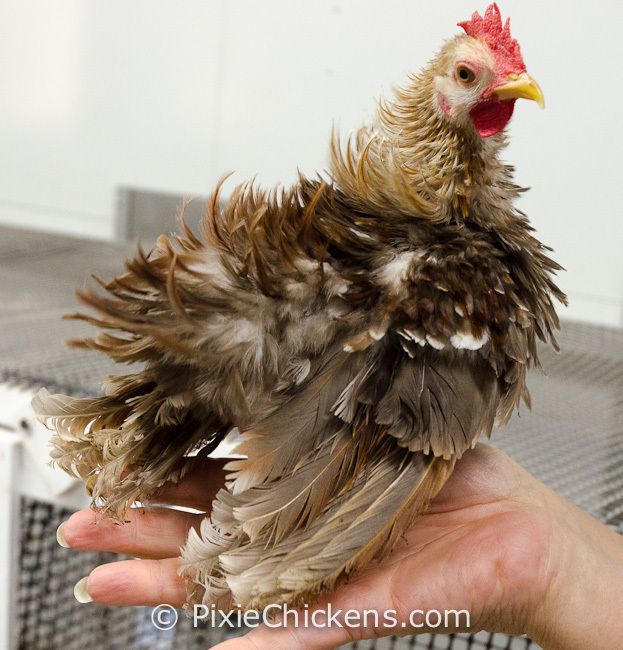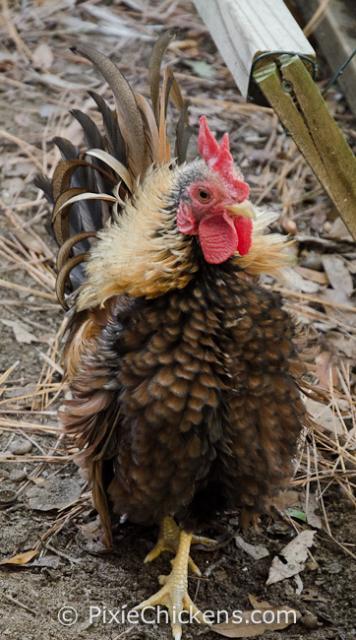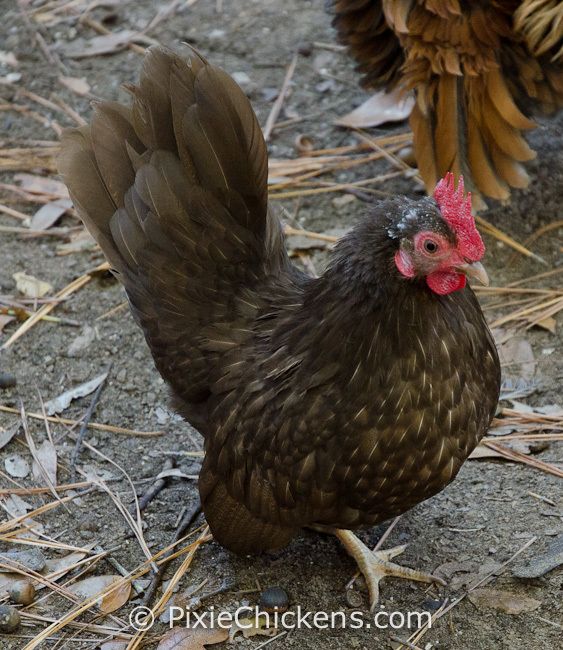Quote:
My choc/split x chocolate gives me 3 out of four chocolate...I currently have a couple eggs in the incubator from choc x choc breeding, so I'm curious to see what happens! My progress has been slow, since I'm breeding chocolate frizzles with smooths, and that plus the sex-linked factor has been very frustrating!
That is interesting if true that you get 3 out of 4 choc. I am getting half choc out of my choc split male over choc females, which is what one would expect with sex-linked recessive choc.
I think the problem arises because the seramas still have hidden color genes, especially if they're split or not solid chocolate. Out of Rolo x The Triplets (choc/split x choc), I got, from my August hatch, solid chocolate and mottled chocolate females, plus 2 males...one boy was Odo, a mottled chocolate frizzle (rumpless), and one boy was a black frizzled silkied...All of this group carries the recessive silkied gene. I think it will take several generations of choc x choc for seramas to actually breed true, just as with the whites and the blacks. Who knows, the ratio from this group may be completely different in the upcoming hatch.
It has been my experience, albeit rather limited, that seramas do not follow the usual color genetic "rules" just yet!
Rolo and the Triplets
Odo
I have only a couple of eggs in the incubator from a choc x choc pairing, Snickerdoodle x Abby...I am
very curious to see what they produce!
Snickerdoodle
Abby












